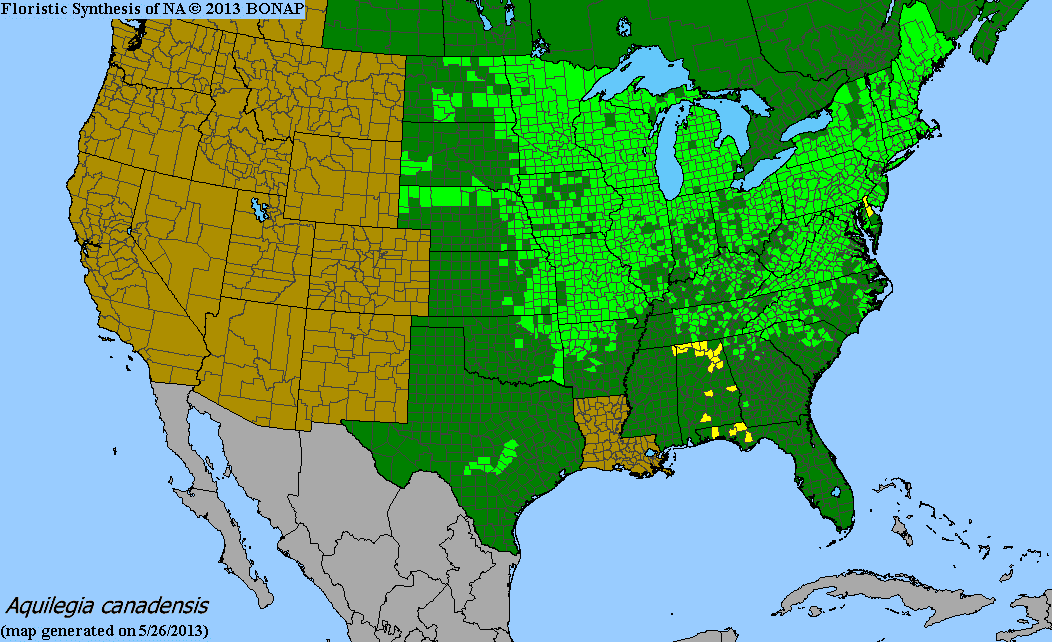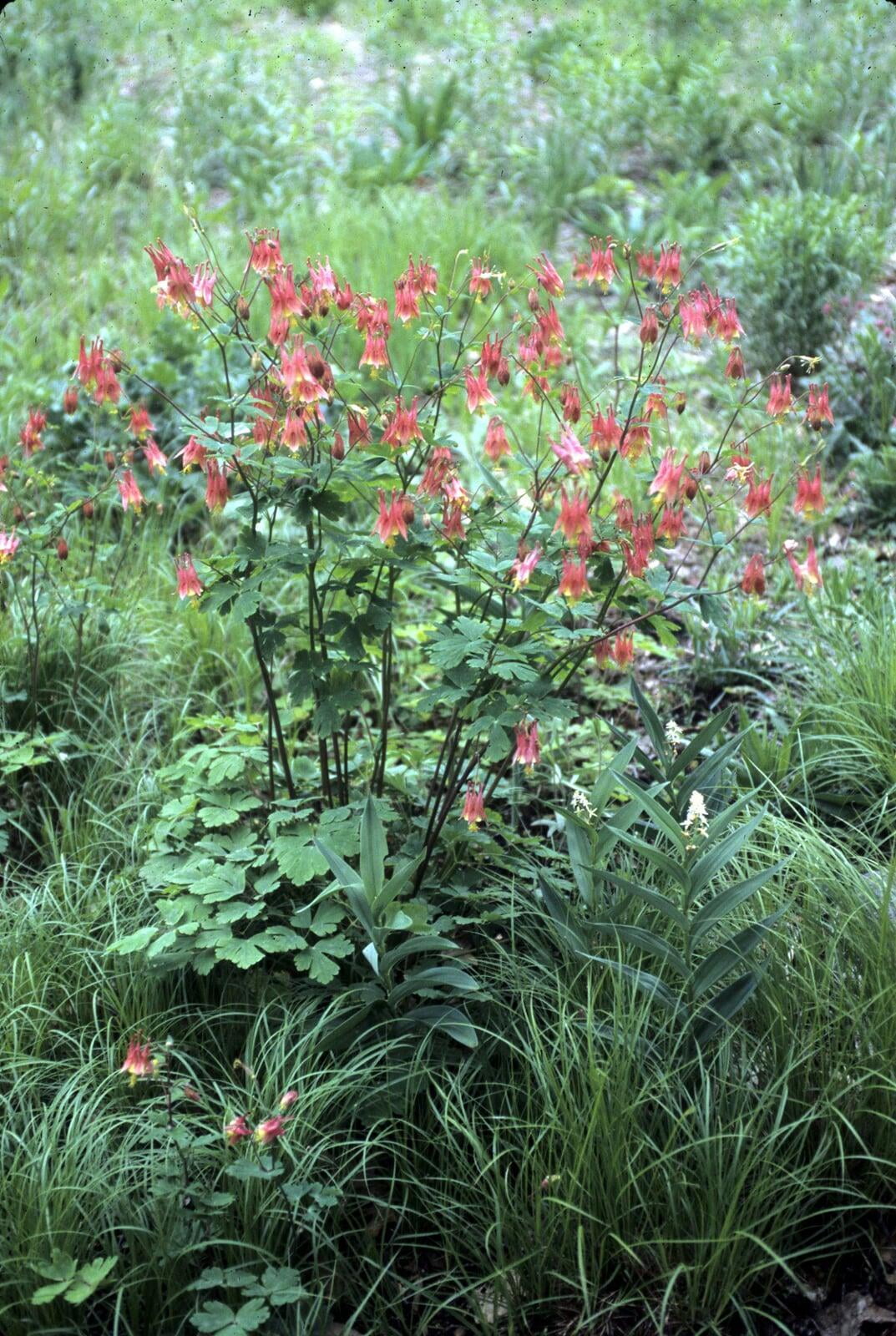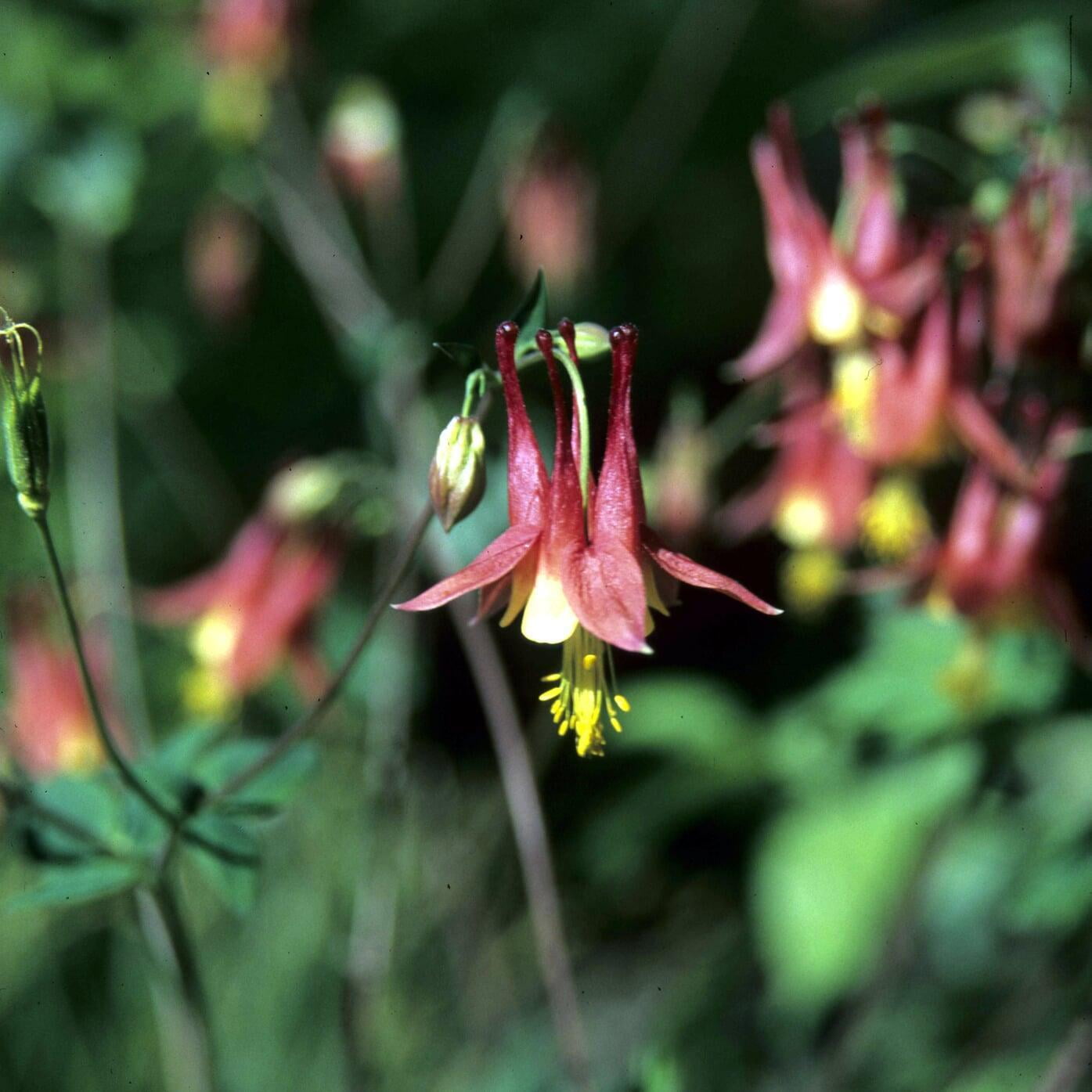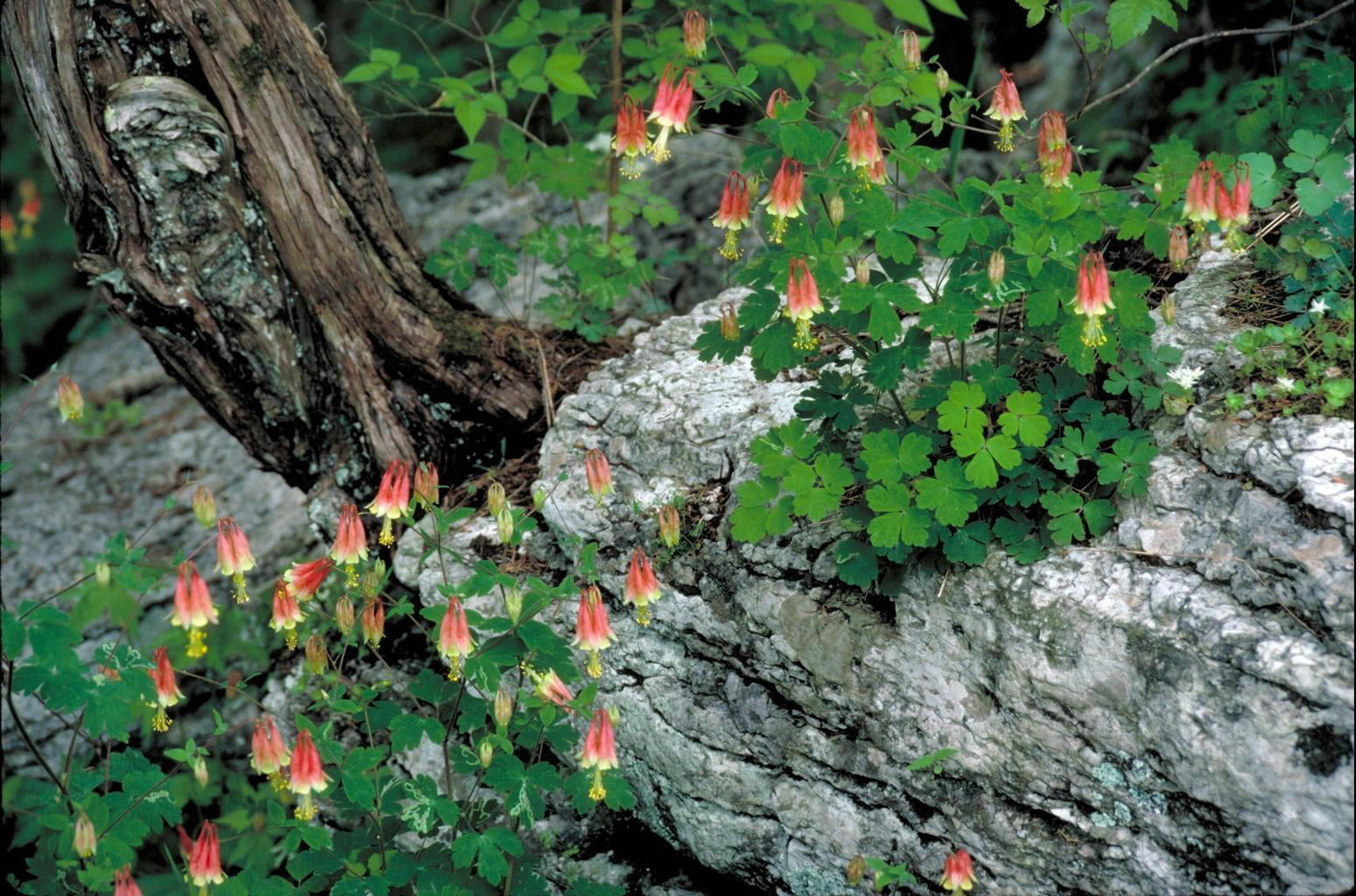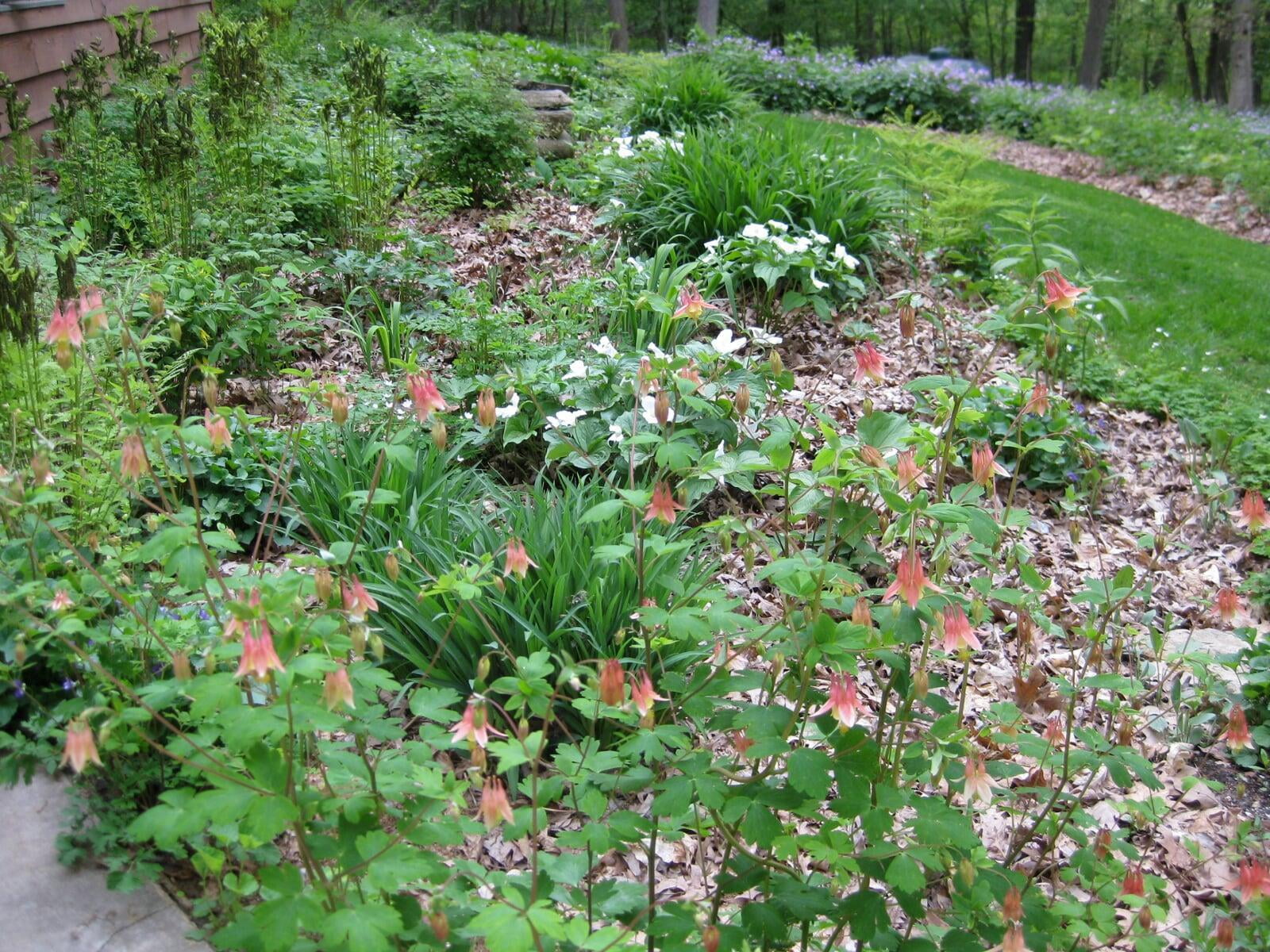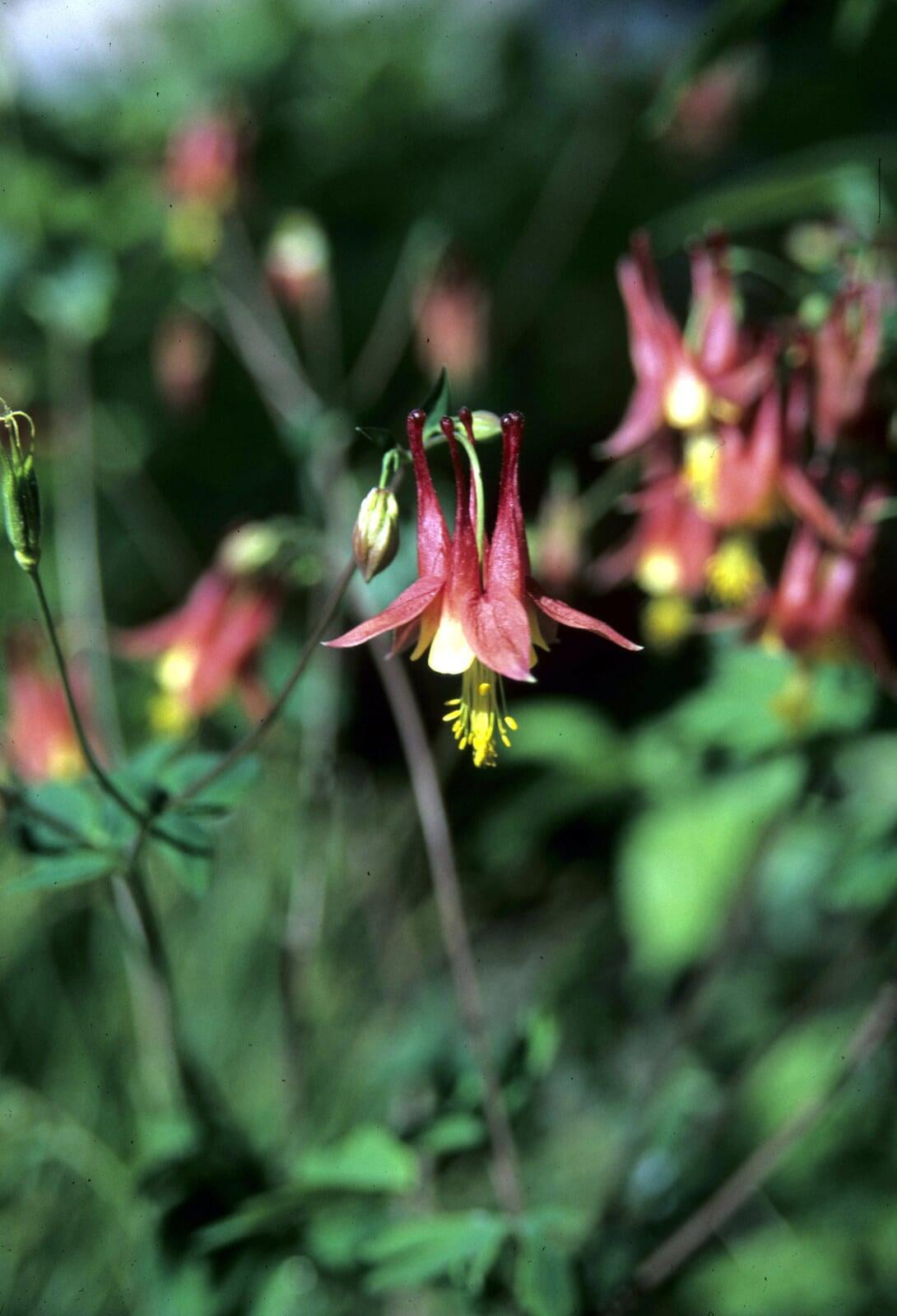Aquilegia canadensis
Columbine Description:
Aquilegia canadensis, commonly known as eastern red columbine, is a clump-forming perennial wildflower that is native to eastern North America. It typically grows up to 1-3 feet tall and produces delicate, nodding flowers that are both beautiful and ornamental.
The flowers of Aquilegia canadensis are unique and attractive, featuring a combination of red and yellow petals that form an interesting, star-shaped bloom. The flowers appear in early spring and are a favorite of hummingbirds, butterflies, and other pollinators.
Aquilegia canadensis is a shade-loving plant that prefers moist, well-drained soils. It is an excellent choice for woodland gardens, naturalized areas, and mixed borders, and can also be used to brighten up rock gardens and other hardscape features.
The foliage of Aquilegia canadensis is also attractive, with its blue-green, finely divided leaves adding to the plant's overall appeal. The leaves are also deer-resistant, making this plant a good choice for gardens in areas with high deer populations.
Overall, Aquilegia canadensis is a hardy and beautiful plant that is easy to grow and maintain. Its early blooms, attractive foliage, and ability to attract pollinators make it a must-have for any garden.
Native Range:
Columbine has a native range that stretches from Minnesota down to Texas and all across the Eastern United States. It is more prevalent in the northern states within this range.
Standard Plant Information:
Plant Height: 1' - 3'
Bloom Time: May - July
Preferred Habitat: Does well in part shade, shade, and even sun. Most at home in rocky woods, slopes, and cliffs. This versatile plant is known for its hardiness and can grow in many conditions.
Sowing:
For most homeowners, the best option is to scatter seed on the ground by hand broadcasting at a minimum of 16-64 pls ounces per acre. For even coverage, we recommend that you broadcast seed in perpendicular rows across the site to ensure even coverage.
You’ll want to broadcast any grass seed first, which will get raked into the soil lightly. Next, it is ideal to mulch the area lightly with either a clean (no seed) straw or preferably with our native Little Bluestem straw, sold at our retail garden centers. After a light mulching is complete, now it’s time to broadcast your native wildflower seeds, which should not be raked into the soil. A good rain or watering is sufficient to cover the seed.
Planting:
Simply dig a hole in the soil slightly larger than the plant’s roots. Ensure that the soil line of the plant is maintained during the transfer (i.e. the plant should be at the same level with the ground as it was in the pot). Pack any loose dirt back around the plant and make sure you water it well the same day to ensure it has the best chance of survival.


